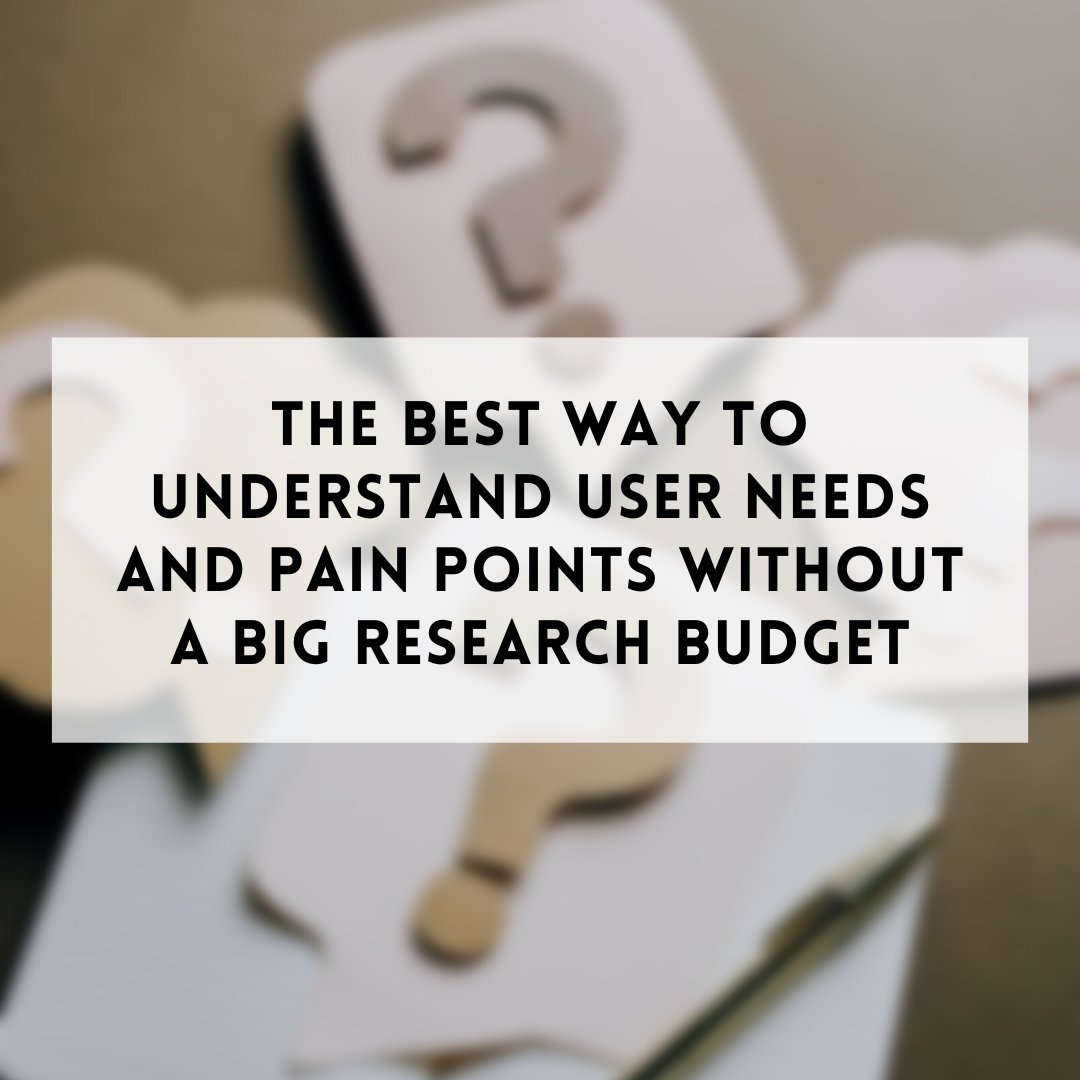The best way to understand user needs and pain points without a big research budget
Understanding user needs and pain points is essential for building successful products and services, but that doesn’t mean we need to get stuck going down a multi-month research hole in order to be “ready” to collaborate, innovate, or prototype.
I know there are plenty of companies that invest a lot of money in understanding the customer, but that level of commitment isn’t always necessary, especially if it’s the primary reason your team hasn’t gotten a project or idea off the ground.
In my work as a facilitator, I’ve seen one too many teams succumb to (what I like to call) research analysis paralysis. Whether you find yourself in a similar role, or on a team that’s struggling with this, there are some straightforward approaches you can take to get out of the weeds.
In today’s article, I’ll talk about how to overcome research analysis paralysis, and some actionable methods for gathering and applying insights – all without a big research budget.
Where To Start
Collecting customer insights is critical to building something that will meet your users' expectations and also ensure that your business aligns with the demands of the market. But when it comes to research inputs, the key is to have just enough information to confidently make choices.
I find that most teams I work with actually have a lot of existing data at their fingertips, whether gathered by the organization, or readily available thanks to the internet.
Not sure where to look? Here are my suggestions:
Existing research: Has the team done prior research to get to know the customer? Poke around within the org to see what exists, then refer to the insights that matter most to your work.
Market insights: What’s happening today with the market? What about the product(s) your team has in the market? Can you observe any trends? See what industry experts and thought leaders are saying, and check for any published studies on your topic. Google is your friend!
Psychographic data: Look for 3rd-party insights about the attitudes and mindsets of your customers – think Pew research and other studies that are available for free or a small fee from credible organizations.
Publicly-available sentiment: What are your customers saying in comments, reviews, and social media posts? These forums offer rich insights around needs and pain points.
Customer feedback: What are your customers saying during calls with sales or call-center reps? Can you invite the customer OR customer-facing team members into a conversation about their needs? Nothing beats the conversations that happen between real people and the design team – they can be world-view shifting.
Okay, you’ve gathered the information and have insights coming out of your ears. Now what do you do with them?
There are many roads you can travel when it comes to applying this information, so I’m just going to talk about a handful of options that I think are particularly helpful, including:
Personas: Creating a fictional character that represents your target customer is a nice way to be able to refer to them concisely. A criticism of the method is that it’s too vague or high level, but I think it’s helpful when used to distill an abundance of information into something that’s easy for team members to refer to and remember.
Problem statements: It’s absolutely critical to define the problem(s) you’re trying to solve. It keeps the work grounded in the user and the group aligned on a specific outcome.
User journey mapping sessions: I like to facilitate this exercise during workshops to help the team work through the current customer experience. Drawing it out provides clarity, helps us talk about what’s working and what’s not, and pinpoints where there might be moments of frustration.
Job stories: This is another good method to do during a workshop because it rallies the team around the customer’s real-life context and day-to-day needs (rather than just thinking about their transactional needs). This results in more clarity about the needs we should be focused on. Here’s a step-by-step guide you can use as a starting point for how to integrate this method into your workshop.
At this point, the team should be ready for collaborative brainstorming and ideation and, eventually, prototyping and user testing. But none of those steps should even start until you’re oriented to the customer and their needs.
This foundational work is key to creating more relevant and valuable offerings for your customers – the kinds that make their lives easier, solves hard problems, and builds loyalty.
